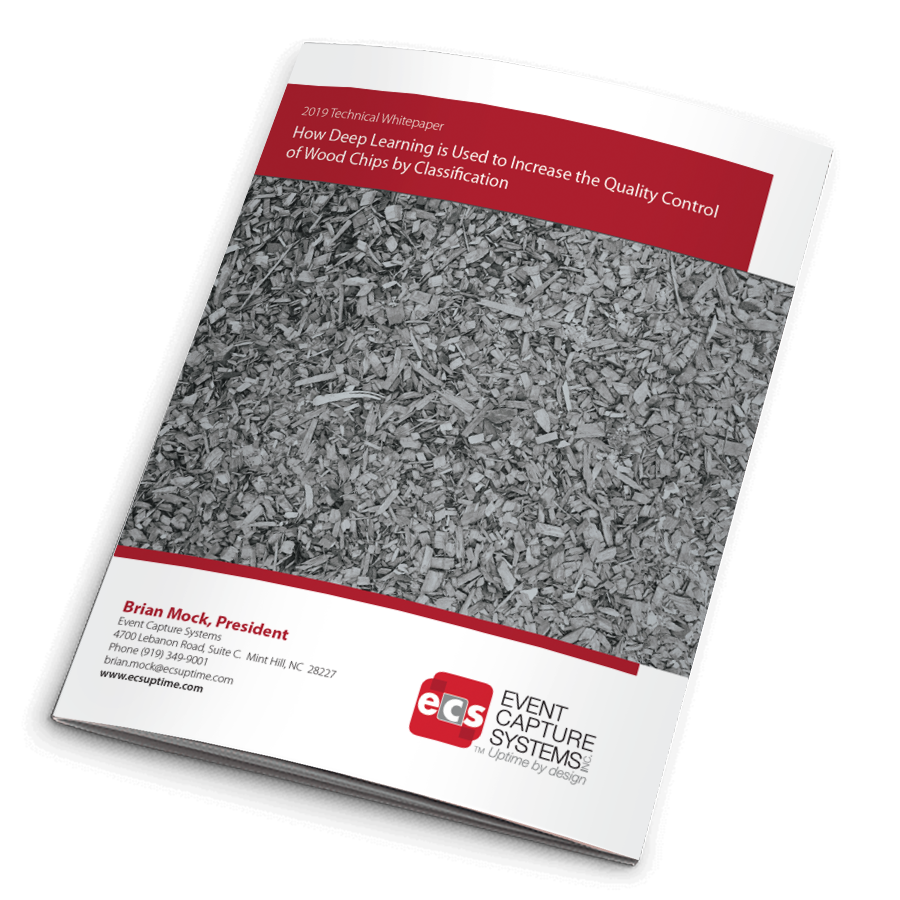2020 Best Paper award - Tappicon
White paper: How Deep Learning is Used to Increase the Quality Control of Wood Chips by Classification
Abstract
The greatest expense to fully integrated papermills are the raw material wood chips that make up the slurry that later becomes paper on the reel of the machine. Random and off-line sampling of the chips provides less than .01% classification of the material. Chips that are off-specification in size, wrong species or contaminated with bark and other foreign matter can greatly impact the subsequent paper making process. Additionally, vendors or internal suppliers that sell or provide these chips to the mill cannot be held to any penalty or feedback loop for supplying chips outside set quality standards. This paper discusses how camera-based imaging with deep learning (artificial intelligence) is used to provide real-time classification of wood chips on the conveyor line.
Introduction
This paper will review the basic concepts of deep learning under the backdrop of AI (artificial intelligence). Several questions will be addressed including
What is this wood chip classifier doing or not doing in terms of computer intelligence?
Are there existing published or open source algorithms that have already solved this problem?
How hard of a problem is this to solve regardless of existing algorithms?
How accurate is the output data? How can the output data be improved?
What are some examples of deep learning that do not follow the requirements of this solution?
Sample data will be shown on generic tests to illustrate how the process has been developed.
Overview
An online and real-time camera-based inspection system positioned to monitor the wood chips from an incoming source can provide a breakdown of key wood chip parameters per time unit. Based on the time of inspection, the resulting classification can be tied back to the supplier (external or internal). The mill can then benchmark the actual chip quality parameter against set quality standards to determine corrective actions to provide optimum outcome of this raw material as it becomes paper. Additionally, wood chip suppliers can be financially penalized for supplying a quality level that is less than predetermined standards.
The resulting financial benefit for online and real-time chip inspection has several key impacts on the paper production facility.
The overall cost of the raw material may be reduced by financially penalizing vendors for supplying low-quality wood chips.
The overall quality of incoming wood chips may be increased while maintaining the same price point.
There may be more incentive for vendors to provide better wood chip quality.
Feedback may be provided directly to internal chip processes to correct and/or improve production processes.
By providing better wood chips, the overall quality of the paper is improved and the capacity of the paper machines may be increased.
Less paper waste is created from producing less off specification product.
Less production downtime may result in reducing the number of paper breaks.
Paper production may be increased by increasing paper machine speed.
LOOKING FOR MORE INFORMATION ON Chip Classification?
Request the full white paper below.





